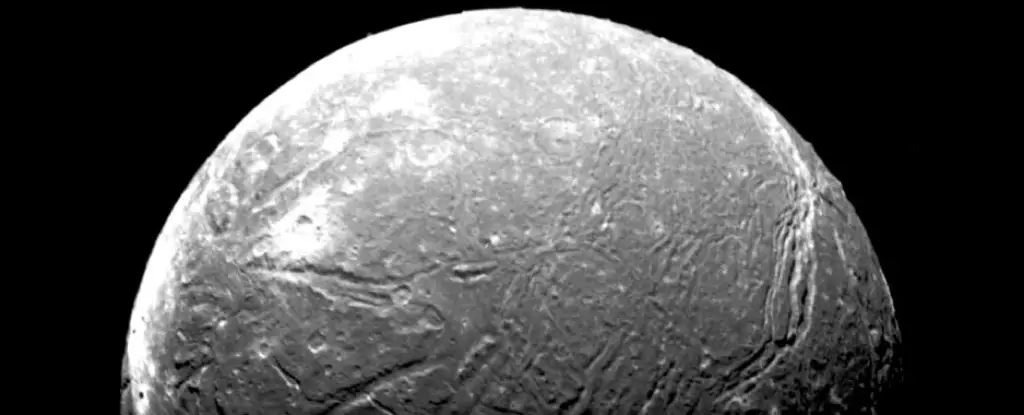Ariel, one of the five moons of Uranus, has recently taken the spotlight as a potential candidate for harboring a subsurface ocean. Known for its icy surface and diverse geological features, Ariel has intrigued scientists for decades. The James Webb Space Telescope (JWST) has played a pivotal role in this discovery by detecting carbon dioxide ice on the surface of Ariel, particularly on the trailing hemisphere. This finding has led researchers to speculate that an underground ocean may be the cause of this unusual phenomenon.
The surface of Ariel is a complex mix of canyons, ridges, faults, and valleys, all of which are primarily driven by tectonic activity. Cryovolcanism, a prominent process on the moon’s surface, constantly reshapes Ariel and has contributed to its status as having the brightest surface among Uranus’ moons. Close examination of Ariel’s surface has revealed significant amounts of carbon dioxide ice, particularly on the trailing hemisphere, defying expectations based on its distance from the Sun.
Previously, it was believed that interactions between Ariel’s surface and charged particles in Uranus’s magnetosphere were responsible for supplying carbon dioxide to its surface through a process known as radiolysis. However, recent spectral analysis conducted by astronomers using JWST has shown that Ariel boasts some of the most carbon dioxide-rich deposits in the solar system. These deposits, measuring about 10 millimeters across the trailing hemisphere, hint at a more intricate process at play. Signals from carbon monoxide, alongside carbonate minerals, further support the hypothesis that a subsurface ocean is actively contributing to Ariel’s unique composition.
To conclusively determine the origin of the carbon oxides on Ariel and shed light on the existence of a subsurface ocean, a future space mission to Uranus is essential. Such a mission would not only explore Ariel but also uncover the mysteries of other moons within the Uranian system. With canyons, fissures, and grooves covering its surface, Ariel presents tantalizing opportunities for scientific exploration. By delving into these features, a robotic explorer could provide invaluable insights into the geological processes at play and the potential presence of an underground ocean.
Ariel, the enigmatic moon of Uranus, continues to captivate astronomers with its intriguing surface features and potential subsurface ocean. The discoveries made by the James Webb Space Telescope have opened new avenues for exploration and sparked further interest in understanding the complex dynamics at play on this icy moon. As we look towards the future and the possibility of a space mission to Uranus, the secrets of Ariel and its hidden ocean may soon be revealed, offering a glimpse into the mysteries of our solar system’s outer reaches.


Leave a Reply